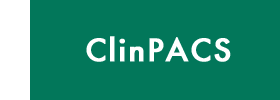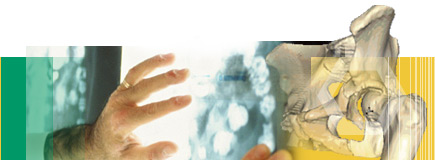| |
Digital Data Manipulation and Templating (as per RACS DDI Options)
While all users of diagnostic quality images will require a standard DICOM viewer, specialised software will be required by specific groups. These include:
|
Orthopaedic Surgeons |
Joint templating and 3 D multi-planar reconstruction
|
|
Radiation Oncology |
CT-MRI overlay and treatment field planning
|
|
Spinal Surgeons |
2D multi-planar reconstruction.
|
The basic requirement of measurement and planning may be adequately provided within the functionality of the basic viewing software. If this is the case, no special software or functionality may be needed in this respect.
However, complex reconstructive procedures, and in particular arthroplasties, frequently require careful and specialised pre-operative planning to achieve an optimal outcome.
|
Stage 5
Image Data Manipulation
e.g. Templating and Planning
|
Optimum |
Acceptable (qualified) |
|
Templating (measuring) software linked to DICOM viewing interface (ideally with magnification reference marker)
- thick client
- thin client - web accessible
**This software may be required at multiple locations, and therefore may be provided by the prosthesis vendors or by a hospital as part of the usual digital image delivery over a sufficient capacity network. Such software can run on a local machine (thick client), over a LAN or WAN. |
1. Templating software, not linked to DICOM Viewing interface, but that can indepentdently retrieve DICOM image data
2. Acetate templating sheets onto known size laser printed digital copies without size marker
3. Acetate templating sheets onto digital display screen with manual magnification and size calibration
**Some caution is needed - the surgeon must be trained in the use of this technique as it involves manual calibration of image size on screen against a ruler |
Image data manipulation in the form of measurement or templating is a standard requirement for the majority of image distribution systems which surgeons will use.
The basic requirements include:
- Integration with surgical templating software to facilitate efficient workflow.
- Provision of appropriate scout images and measurement, particularly for spine.
- Other measuring functionality, as part of primary image viewing software tools.
- If integrated templating software is not available, images to be supplied on hard copy transparent film to allow manual templating using acetate sheets..
Access to such measurement and templating software may be required at multiple locations (clinic, wards and operating theatre), and therefore may be provided by the prosthesis vendors or by a hospital as part of the usual digital image delivery over a sufficient capacity network. Such software can run on a local machine (thick client), over a LAN or WAN.
Such capabilities may be provided within the actual DICOM viewing software; however the specific requirement will vary with the clinical needs and circumstances.
To utilize digital templating, computer specifications should be at least those recommended by vendor for the particular application.
|
|
|

